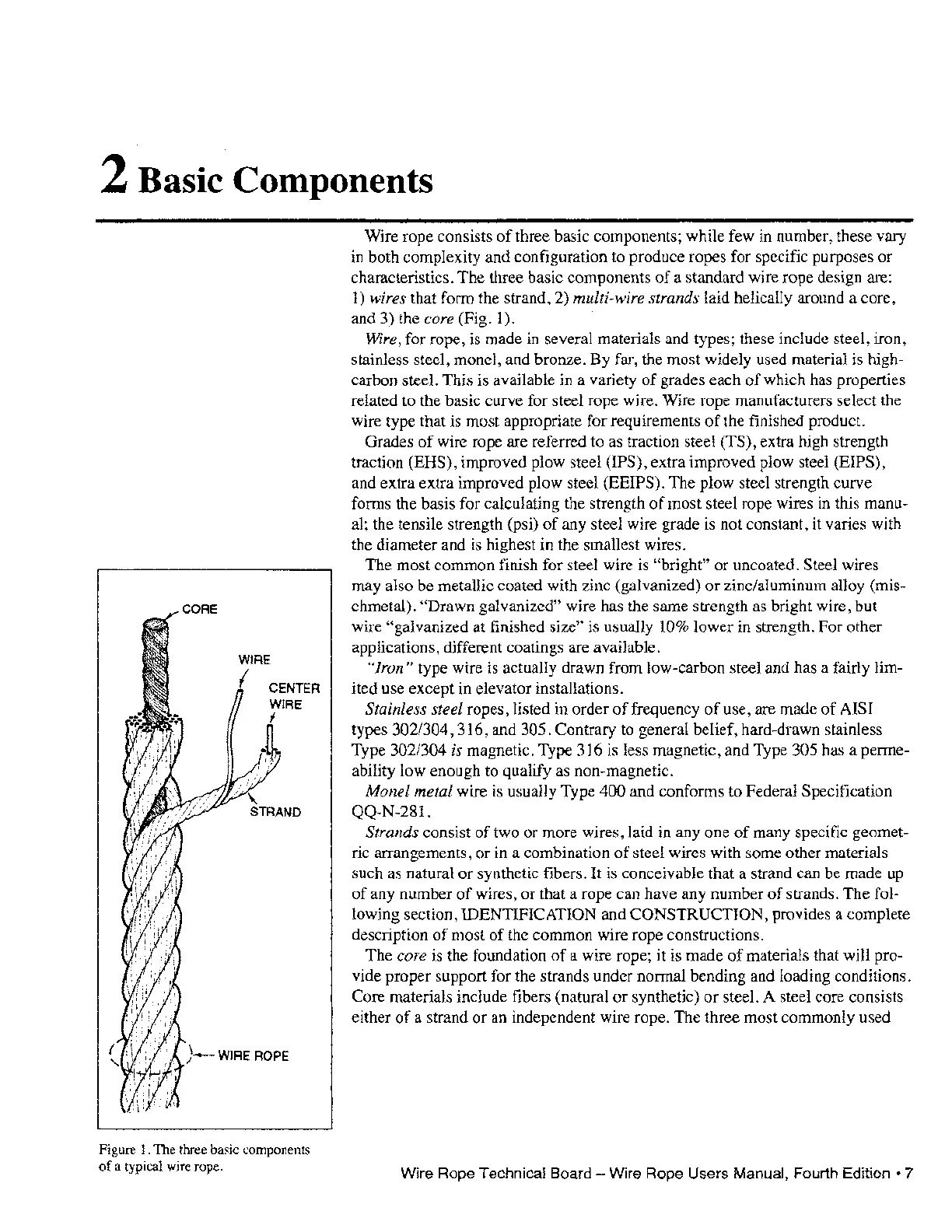2 Basic Components
CENTER
WIRE
Figure
1.
The three basic components
of
a typical wire rope.
Wire rope consists
of
three basic components; while few in number, these vary
in
both complexity and configuration to produce ropes for specific purposes or
characteristics. The three basic components
of
a standard wire rope design are:
1)
wires that form the strand, 2) multi-wire strands laid helically around a core,
and 3) the
core (Fig. 1).
Wire, for rope, is made in several materials and types; these include steel, iron,
stainless steel, monel, and bronze. By far, the most widely used material is high-
carbon steel. This is available in a variety
of
grades each
of
which has properties
related to the basic curve for steel rope wire. Wire rope manufacturers select the
wire type that is most appropriate for requirements
of
the finished product.
Grades
of
wire rope are referred to as traction steel (TS), extra high strength
traction
(EHS) , improved plow steel (IPS), extra improved plow steel (EIPS),
and extra extra improved plow steel (EEIPS). The plow steel strength curve
forms the basis for calculating the strength
of
most steel rope wires in this manu-
al; the tensile strength (psi)
of
any steel wire grade is not constant, it varies with
the diameter and is highest in the smallest wires.
The most common finish for steel wire is
"bright" or uncoated. Steel wires
may also be metallic coated with zinc (galvanized) or zinc/aluminum alloy (mis-
chmetal).
"Drawn galvanized" wire has the same strength as bright wire, but
wire
"galvanized at finished size" is usually 10% lower in strength. For other
applications, different coatings are available.
"Iron" type wire
is
actually drawn from low-carbon steel and has a fairly lim-
ited use except in elevator installations.
Stainless steel ropes, listed in order
of
frequency
of
use, are made
of
AISI
types 302/304,316, and 305. Contrary to general belief, hard-drawn stainless
Type
302/304 is magnetic. Type 316 is less magnetic, and Type 305 has a perme-
ability low enough to qualify as non-magnetic.
Monel metal wire
is
usually Type 400 and conforms to Federal Specification
QQ-N-281.
Strands consist
of
two or more wires, laid in
anyone
of
many specific geomet-
ric arrangements, or in a combination
of
steel wires with some other materials
such as natural
or
synthetic fibers.
It
is conceivable that a strand can be made up
of
any number
of
wires, or that a rope can have any number
of
strands. The fol-
lowing section, IDENTIFICATION and
CONSTRUCTION, provides a complete
description
of
most
of
the common wire rope constructions.
The
core is the foundation
of
a wire rope; it is made
of
materials that will pro-
vide proper support for the strands under normal bending and loading conditions.
Core materials include fibers (natural
or
synthetic)
or
steel. A steel core consists
either
of
a strand or an independent wire rope. The three most commonly used
Wire Rope Technical Board - Wire Rope Users Manual, Fourth
Edition·
7
